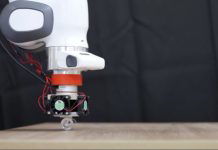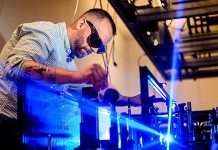
In the exciting world of technology, “mixed reality” headsets are making waves, creating a blend of the real world and digital wonders right before our eyes.
These headsets use a technology called passthrough video, which basically turns the world around us into a backdrop for digital content—like being in a video game and real life at the same time!
At Stanford University, a team decided to see how these headsets work in everyday life. They wore them while doing normal things like talking to people, walking outside, playing games, and even cooking.
The headsets they used, called Meta Quest 3, have special cameras that let users see the world around them on tiny screens inside the headset, with digital images added into the mix.
Their adventure, shared in the journal Technology, Mind, and Behavior, was full of ups and downs. On one hand, the experience was super cool.
Imagine walking around, chatting with friends, or even buying coffee while seeing digital objects or messages floating in front of you. It’s like stepping into a sci-fi movie, and the researchers found it pretty thrilling.
Jeremy Bailenson, a big name in virtual reality at Stanford, has been watching this technology for decades. He thinks it’s really important to study how wearing these headsets for a long time might affect us, both in how we act and how we feel.
After all, if people start wearing them all day, every day, we need to know what that’s going to be like.
The study revealed some amazing stuff about experiencing the world through a headset. It can be super fun and make you feel like you’re living in the future. But there are also some tricky parts, like when things don’t look quite right, or it’s hard to talk to people when you’re both wearing headsets. Plus, there’s always the chance of bumping into things or people, so the researchers made sure to have a buddy nearby to keep them safe.
James Brown and Monique Tania Santoso, two of the researchers, really got into the experiment. They tried to see what it was like from both a personal feeling and a more scientific viewpoint.
Walking around campus, interacting with people they didn’t know, and doing everyday stuff while in the headset was a brand-new experience for them. Portia Wang, another team member, found the whole thing quite novel and exciting, too.
But it wasn’t just fun and games. The team says we need to be careful with how much we use these headsets. They’re calling for more studies to really understand the long-term effects, especially when it comes to how we interact with each other and understand the world around us.
In the end, mixed reality headsets could change the way we live, work, and play. But as we step into this blended world of digital and real, it’s important to keep an eye on how it changes us.
The Stanford team’s journey into mixed reality is just the beginning of understanding this new frontier.



